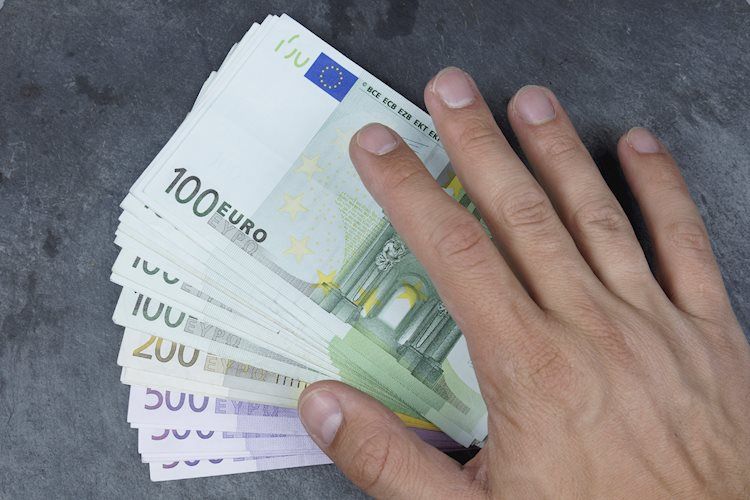- The Euro extends the consolidative theme against the US Dollar.
- European stocks open Friday’s session in a mixed tone.
- Final Q3 GDP figures in Germany kept the gloomy prospects.
The Euro gains further momentum against the US Dollar, prompting EUR/USD to build on Thursday’s gains beyond 1.0900 the figure at the end of the week.
On the other hand, the Greenback appears mildly offered around 103.60 according to the USD Index (DXY), a region also coincident with the critical 200-day SMA.
In the meantime, volatility is expected to remain at low levels following the US Thanksgiving Day holiday on Thursday and Friday’s shortened session.
Interestingly, the US Dollar has managed to rebound earlier in the week despite the prevailing expectation of a potential interest rate cut by the Federal Reserve (Fed) at some point in the spring of 2024. This view remains well supported by persistent disinflationary pressure and the ongoing easing of the labour market.
On the euro docket, final GDP Growth Rate figures showed the German economy shrank 0.1% QoQ and 0.4% over the last twelve months. Still in Germany, the Business Climate improved to 87.3 in November, according to the IFO institute.
Later in the session European Central Bank’s (ECB) President Christine Lagarde and Vice-President Luis De Guindos are due to speak.
Across the pond, preliminary Manufacturing and Services PMIs will be the sole release on Friday.
Daily digest market movers: Euro maintains the buying pressure above 1.0900
- The EUR adds to recent gains against the USD.
- US and German yields edge higher early on Friday.
- Investors are still assessing the Fed’s rate reduction in 2024.
- Markets believe the ECB will keep its policy unchanged until early next year.
- Business Climate in Germany improves a tad in November.
- BoE’s H. Pill argued that economic activity and job growth are softening.
Technical Analysis: Euro shifts the attention to 1.0965
EUR/USD maintains the slightly bid bias above the 1.0900 hurdle so far at the end of the week.
The November high of 1.0965 (November 21) now represents the immediate target for bulls ahead of the key 1.1000 threshold. Further north, EUR/USD may encounter resistance at the August top of 1.1064 (August 10) and another weekly peak of 1.1149 (July 27), both preceding the 2023 high of 1.1275 (July 18).
Meanwhile, any corrective declines should find first support at the major 200-day SMA at 1.0809, followed by the temporary 55-day SMA at 1.0658. The weekly low of 1.0495 (October 13) aligns just below here, before the 2023 low of 1.0448 (October 3).
Overall, the pair’s prospects should remain positive as long as it remains above the 200-day SMA.
Euro FAQs
The Euro is the currency for the 20 European Union countries that belong to the Eurozone. It is the second most heavily traded currency in the world behind the US Dollar. In 2022, it accounted for 31% of all foreign exchange transactions, with an average daily turnover of over $2.2 trillion a day.
EUR/USD is the most heavily traded currency pair in the world, accounting for an estimated 30% off all transactions, followed by EUR/JPY (4%), EUR/GBP (3%) and EUR/AUD (2%).
The European Central Bank (ECB) in Frankfurt, Germany, is the reserve bank for the Eurozone. The ECB sets interest rates and manages monetary policy.
The ECB’s primary mandate is to maintain price stability, which means either controlling inflation or stimulating growth. Its primary tool is the raising or lowering of interest rates. Relatively high interest rates – or the expectation of higher rates – will usually benefit the Euro and vice versa.
The ECB Governing Council makes monetary policy decisions at meetings held eight times a year. Decisions are made by heads of the Eurozone national banks and six permanent members, including the President of the ECB, Christine Lagarde.
Eurozone inflation data, measured by the Harmonized Index of Consumer Prices (HICP), is an important econometric for the Euro. If inflation rises more than expected, especially if above the ECB’s 2% target, it obliges the ECB to raise interest rates to bring it back under control.
Relatively high interest rates compared to its counterparts will usually benefit the Euro, as it makes the region more attractive as a place for global investors to park their money.
Data releases gauge the health of the economy and can impact on the Euro. Indicators such as GDP, Manufacturing and Services PMIs, employment, and consumer sentiment surveys can all influence the direction of the single currency.
A strong economy is good for the Euro. Not only does it attract more foreign investment but it may encourage the ECB to put up interest rates, which will directly strengthen the Euro. Otherwise, if economic data is weak, the Euro is likely to fall.
Economic data for the four largest economies in the euro area (Germany, France, Italy and Spain) are especially significant, as they account for 75% of the Eurozone’s economy.
Another significant data release for the Euro is the Trade Balance. This indicator measures the difference between what a country earns from its exports and what it spends on imports over a given period.
If a country produces highly sought after exports then its currency will gain in value purely from the extra demand created from foreign buyers seeking to purchase these goods. Therefore, a positive net Trade Balance strengthens a currency and vice versa for a negative balance.
Read the full article here

